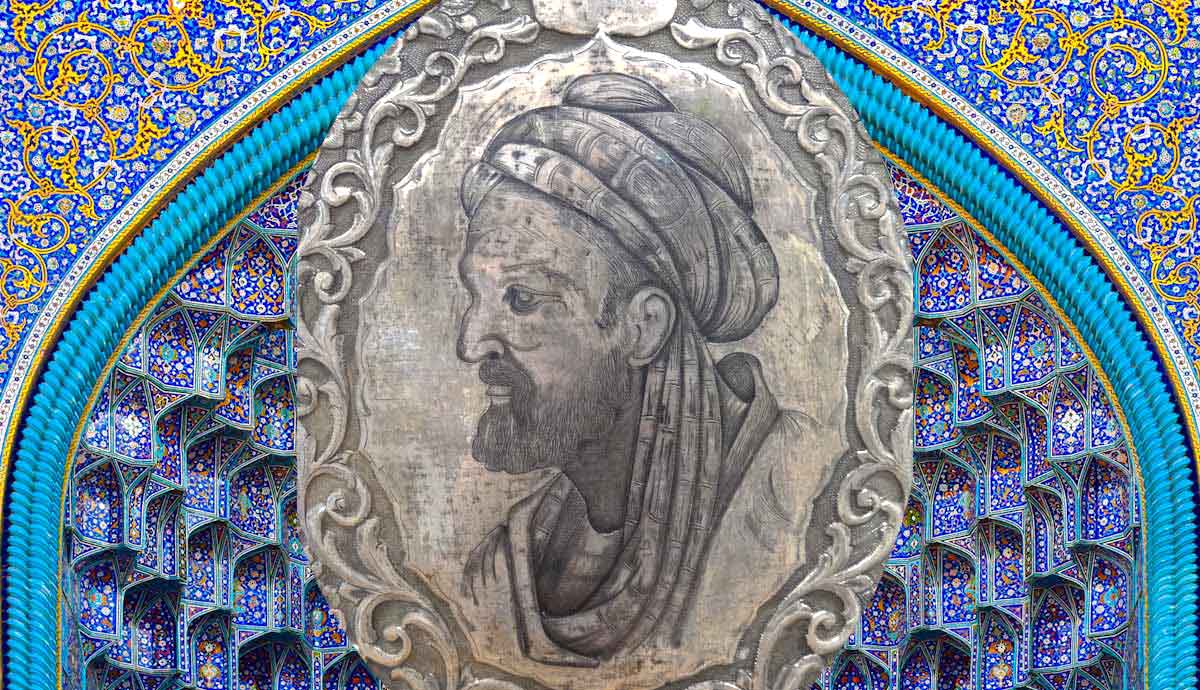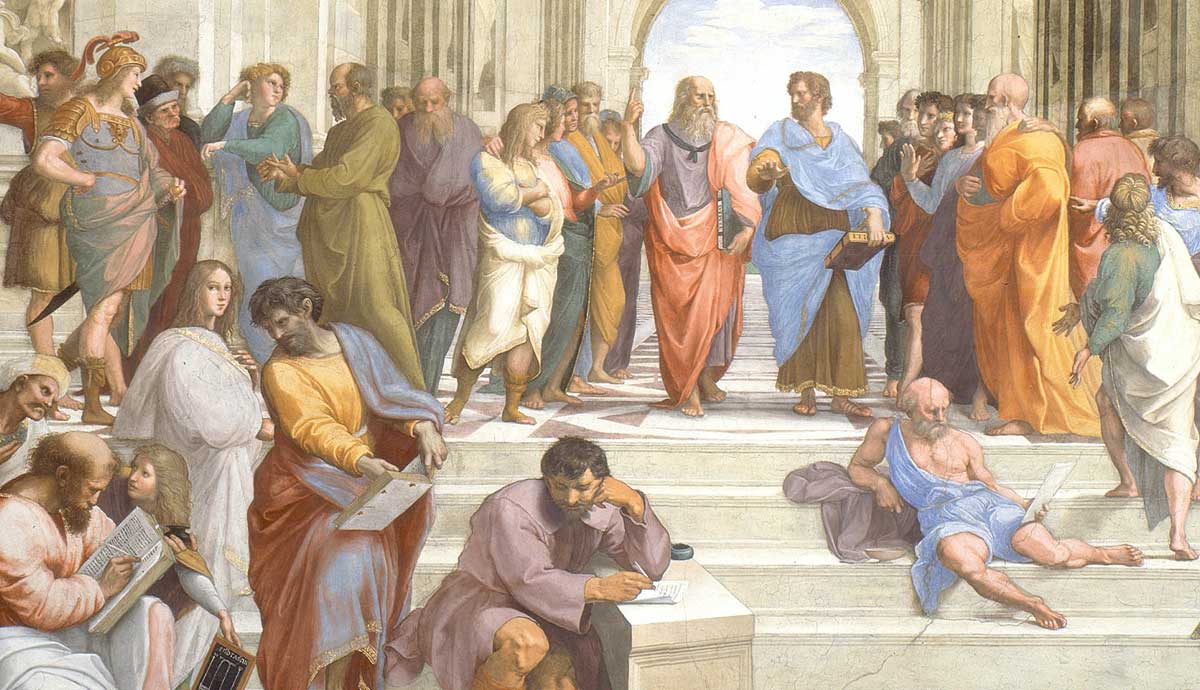
Ibn Sina, known in the west as Avicenna via the Hebrew translation of his name, is one of the most influential thinkers of the Islamic Golden Age. This article sets out Ibn Sina’s biography, starting with his ancestry, proceeding through his education and his political endeavors, and ending with his death.
Ibn Sina was born in August 980 CE. All of our information about his childhood and adolescence comes from the autobiographical narration he dictated to a pupil. Indeed, this will be one of the main sources for all further discussion of Ibn Sina’s life, although it is quite clearly an unreliable account, and should be understood as containing only Ibn Sina’s life in the terms in which he would have chosen to describe it.
Ibn Sina’s Cosmopolitan Upbringing

Ibn Sina was born in a large village near Bukhara, known as Kharmaithan, meaning the ‘Land of the Sun’. His father was from Balkh, given the epithet ‘the glittering’ in Middle Persian literature. It was known as Bactra to the Greeks, and throughout much of antiquity constituted a center of Hellenism in Persia.
Following a period of decline, it faced renewal as a major, cosmopolitan center during the Samanid and Ghaznavid dynasties. Soheil M. Afnan observes that Balkh was a place of extraordinary cosmopolitanism:
“Here Zoroastrianism, Buddhism, Manichaeism, Nestorian Christianity and finally Islam met. This was the site of the Nowbahar, the renowned Buddhist monastery visited by pilgrims from far-away China, at the head o f which was Barmak, the ancestor of the most powerful, able and enlightened minister at the court of the Caliphs in Baghdad”.
Nearby cities, like Bukhara, had corresponding Chinese names (Pu-Ho), and there too a major Buddhist monastery stood alongside a major Islamic school.
Ibn Sina’s Ancestry

Ibn Sina’s ancestry continues to remain oblique. His mother’s name, Setāreh, is certainly Persian and we know she came from nearby. However, it has been suggested that his father was Persian, Turkish, Arab, Chinese, or some combination thereof.
Whatever his origins, Ibn Sina’s father was a fairly powerful man – it would seem that he moved from Bukhara to nearby Kharmaithan to take up a local governorship – but one with radical views. Ibn Sina tells us that, “My father was one of those who had responded to the invitation of the Egyptians [the Fatimids] and was counted among the Isma’ilis”.
The Isma’ilis were a mystical sect, and not considered orthodox by the rulers of Persia. Moreover, his father and brother were known to discuss other, dissident regimes of knowledge: Indian arithmetic, geometry and philosophy, though Ibn Sina neither confirms nor denies his participation in such. Certainly, he is keen to distance himself from his father’s religious views.
Ibn Sina’s Education

Ibn Sina’s own education appears to have been, at least initially, quite eclectic. He famously claims to have read and memorized the entire of the Qu’ran by the age of ten, although whether this is something he intends to be taken literally or as a sign of his foundational commitment to Islam remains ambiguous.
In any case, he appears to have learned some Indian mathematics from a grocer, his religious argumentation from an aged ascetic, and eventually his philosophy from a renowned tutor, Nātelī. He read a wide range of Greek authors in Arabic translation, including Aristotle, Plato and Euclid. He read the former two philosophers with the aid of commentaries, which seems to be where the ‘Peripatetic’ (post-Aristotelian) and Stoic elements of his thought come from.
From the age of sixteen onwards, he became obsessed with logic. In a rather intriguing anecdote, Ibn Sina claims that during this period, whenever a problem escaped him, he prayed at the mosque in order to break through whichever intellectual issue was plaguing him at the time, but whenever he felt physically weak he recovered his strength by drinking a glass of wine.
Aristotle and Fārābi

Nonetheless, Ibn Sina found Aristotle’s Metaphysics to be entirely intractable, despite claiming to have read it some forty times. It was only when he reluctantly bought a volume from a bookseller, which turned out to be Fārābi’s commentary on Aristotle’s text, that the purpose of Aristotle’s work became clear to him.
He had simultaneously taken up medicine, and at around this time, the reigning prince in Bukhara (Nuh Ibn Mansur), of whom Ibn Sina was a subject, fell ill. Ibn Sina was called to treat him, and whilst he did so gained access to the famous, Samanid library at Bukhara:
“I saw books whose very names are as yet unknown to many-works which I had never seen before and have not seen since. I read these books, taking notes of their contents.”
This dynasty was indeed famous for their promotion of literature and their veneration of learning. Soon after this, the library was destroyed by fire, and Ibn Sina’s enemies maintained that he himself had burned it down, in order to keep its learning for himself.
From Bukhara to Gurganj – and Exile

Ibn Sina then moved from Bukhara to Gurganj. The reason he gives is the death of his father, although the need to earn his own living doesn’t explain the need to change master, from the prince of Bukhara to the sultan of Gurganj. However, these were tumultuous times, as Turks were in the ascendancy across Persia, and especially critical of those with Isma’ili beliefs or connections.
Although he was initially welcomed with open arms, life in Gurganj was not easy. The Sultan, called Mahmud, was known for his strict religious orthodoxy, and eventually Ibn Sina fled, much to the Sultan’s chagrin. We learn from Ibn Sina’s own account that Mahmud then ordered a painter…
“…to make a portrait of [Ibn Sina] and that some forty copies were cir-culated throughout the land with strict orders that he should be arrested wherever found and sent to the Sultan under escort. Meanwhile Avicenna and Masihi (Ibn Sina’s companion)…wandered from village to village until on the fourth day they were caught in a violent sandstorm and completely lost their way. Masihi could not survive the excessive heat of the desert, and died of thirst, assuring his companion, however, that ‘their souls would meet elsewhere.’ Avicenna together with the guide found his way to Baward ‘after a thousand difficulties.”

The move to Gurganj therefore marked the beginning of a period of itinerance for Ibn Sina, which he describes thus:
“… then necessity constrained me to move to Fasa and thence to Baward and thence to Tiis, then Shaqqan, then Samanqan, then Jajarm the frontier-post of Khurasan, and thence to Jurjan (Gurgan). My entire purpose was to reach the Amir Qabiis; but it happened meanwhile that Qabiis was taken and imprisoned in a fortress, where he died. After this I went to Dihistan where I fell very ill, then returned to Jurjan where Abii ‘Ubaid al-Jiizjani made friends with me; and I composed a poem on my condition in which there is a verse saying: ‘And great once I became, no more would Egypt have me / And when my value rose, no one would care to buy me.’ Those last lines of verse are not to be taken literally, but are rather a reference to the plight of Joseph in Egypt, and display self-pity and self-restraints in equal measure.”
Politics and Death

Ibn Sina eventually found himself in a position of major political power in Hamadhan, having originally been summoned to treat Hamadhan’s ruler for colic, eventually promoted to become first his personal physician, then a vizier. However, Ibn Sina made enemies in this latter position, especially with the army (rarely a wise move for any politician).
Ibn Sina was also something of a libertine by the standards of the time, making no secret of his love for alcohol and for music. Ibn Sina began corresponding with the ruler of Isfahan, Alā el-Dowleh, and when this was discovered was forced into hiding. He came to be imprisoned, about which he composed the following lines in verse:
“My going in was sure, as you have seen / My going out is what many will doubt.”
Contra his own pessimism, Ibn Sina was freed and escaped to Isfahan. This place became Ibn Sina’s home as far as any place was his ever home. Though certainly close with the ruler, Ibn Sina largely stayed out of politics and focused on his work.
However, even in Isfahan he could not escape the civil war erupting throughout much of Persia, and his death was not to be wholly peaceful. He fled Isfahan near the end of his life, along with Alā el-Dowleh, and in a state of seriously ill health. We hear that even his own servants were a source of danger for him at this time:
“He also took mithridatum for the epilepsy; but one of his slaves went and threw in a great quantity of opium, and he consumed the mixture; this being because they had robbed him of much money from his treasury, and they desired to do away with him so that they might escape the penalty of their actions.”
Having recaptured Isfahan, Alā el-Dowleh marched on Hamadhan and Ibn Sina came with him. Their campaign was successful, and not long after Ibn Sina died in the city which had pursued and imprisoned him, in the summer of 1037 at the age of 58.










